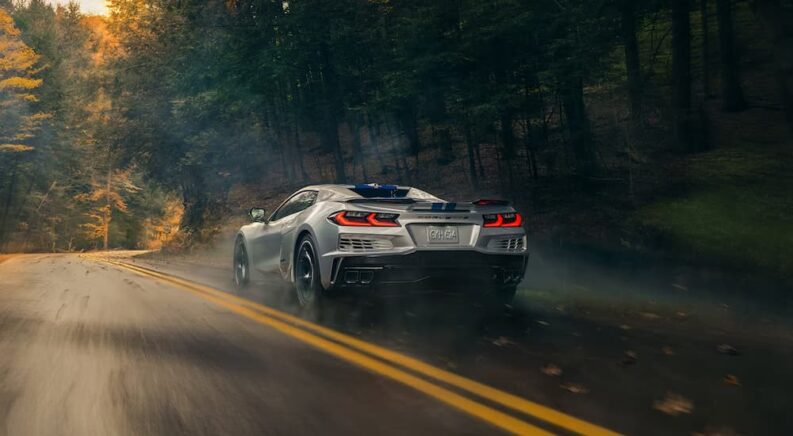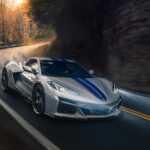I remember well the rise of electric cars and hybrids in the early 2000s. While electric vehicles of some sort have been around for over a century (the first, created in 1889, was essentially an electrified wagon), quite a few manufacturers tried to make them more mainstream around the turn of the millennium. They promised that Electric Vehicles (EVs) would help the environment and save drivers money in the long run. Unfortunately, they did not garner much enthusiasm among consumers. Part of this was simply due to a lack of interest, combined with the fact that charging stations were not prevalent enough around the nation to make long trips easy; this meant drivers had to plot out where and when to make stops, including locations that were quite out of the way.
On top of all that, some hybrids and EVs simply looked awkward and appeared more like driving a box than a car. Gradually, they disappeared from the market by the end of the ‘00s, although a revolution was just around the corner, one that would see them come storming back onto the scene. When you look at the upcoming 2024 Chevy Corvette E-Ray, you can see just how far electric vehicles have come since the early ‘00s. Thanks to a renewed interest in EVs, and an investment in charging stations across the nation, car manufacturers are now revisiting the idea of partial- or fully-electric vehicles.
Some manufacturers are going so far as to say that within a decade, EVs and hybrids will be their main sellers. That may seem like a lofty goal, but a look at recent EV and hybrid releases shows that performance and design are no longer a concern. There could well be a future where gas stations offer more charging stations than gas pumps.
The EV and Hybrid Resurgence
Around 2010, the United States government began to invest in electric vehicles, providing loans to manufacturers that promised to develop EVs. At the same time, Chevy put out its famed Volt, the first commercially available Plug-in Hybrid Electric Vehicle (PHEV). The Volt solved one of the biggest issues consumers had with EVs: the exclusive need for charging stations. With its PHEV design, the Volt could utilize both electric power and gas, allowing it to make the most of both types of energy. This made it stand apart from being an all-electric model, and for a lot of consumers, it provided the best of both worlds.
Hybrids gradually gained popularity thanks to this dual nature. They allowed people to drive an environmentally-friendly vehicle without always worrying about where the nearest charging station was. Plus, the Volt looked good; its smooth, aerodynamic shape and sleek outside let it be a car whose appearance people were proud of instead of vaguely embarrassed by. In the past couple of years, the US government has provided additional funding to install charging stations around the country, plus some states, such as California, are aiming to require that only EVs can be sold there within the next ten years or so. While this is a “time will tell” type of pledge, it’s hard to imagine anyone proposing such a radical step back in 2010 and being taken seriously.
The Current EV Landscape
If you find yourself chatting with people about their rides, you may have noticed that EVs and hybrids have become much more popular. You likely have a co-worker or neighbor who drives one–or perhaps you have one. And stats back this up; for instance, Americans bought 500,000 electric hybrids in 2013 (that’s pretty decent for a decade ago), but in 2021, purchases had grown to 800,000 electric hybrids. Fully-electric vehicles have seen a far greater increase: in 2016, EV sales did not even top 100,000, but in 2021 they hit about 450,000. The rate of increase has astonished manufacturers who are now eager to pump out more hybrids and EVs to meet the market’s demands.
If you are eyeing a certain model, then the odds are high that there is a hybrid, or even all-electric, version of that model. Recently, these options have become so effective that their performance has begun to match the gasoline-powered versions of these models. For anyone concerned about performance, the gap between gasoline- and electric-powered has narrowed considerably, and within a few years, it may be completely gone. This brings us to the Chevy Corvette E-Ray where we see a new design that’s set to upend the market and push us further into the electrified future of automobiles.
A Hybrid Dedicated to Performance
For car aficionados, performance is usually at the top of their list when looking at a vehicle’s features. In the past, this may have led them to steer clear of hybrids and EVs; though recent vehicles have helped turn this around. The new Corvette E-Ray is ready to destroy any preconceived notions we still have about hybrid performance. It’s been made with power in mind first and foremost, challenging the rest of the market to keep up with this development. There’s no question onlookers will be shocked by the E-Ray, which can go from 0 to 60 in 2.5 seconds and travel a quarter mile in 10.5 seconds; these are incredible feats for a hybrid vehicle.
Its performance numbers come in high too, with a monster of a hybrid powertrain that delivers 655 hp, which makes it ready to compete on pretty much any racetrack. So, what’s going on under the hood to allow this level of performance? Much of this is thanks to an electric All-Wheel Drive (e-AWD) system that uses both an electric battery and a gasoline engine (an incredible LT2 V8 engine). These work in tandem to provide the driver with the best performance possible with the front wheels using electric power and the back wheels powered by the gasoline engine. There’s also an option for stealth mode (which, as a fan of spy thrillers, immediately interested me), where the Corvette can switch to only electric power and travel short distances; it’s perfect for zipping around town without using much fuel.
Its exterior looks gorgeous, too, which is no surprise since it’s still a C8 Corvette. There will be plenty of people ready to purchase this for its look and performance alone; the fact that it’s a hybrid will simply be the icing on this high-performance cake. In the past, there’s been a cliche that hybrids are just for those who are environmentally minded, but not anymore. This Corvette symbolizes the future of automobiles where a hybrid or EV that delivers stellar performance is the norm, not an exception. In other words: the age of sacrificing speed and power for a hybrid is decidedly over.
What the Future Looks Like
This is not to say that everyone will move over to the Chevy Corvette E-Ray since everyone has their lifestyles, preferences, and goals. Someone might be looking more for a vehicle that tows and hauls or offers plenty of room inside for a large family, so while this revolutionary new vehicle might not interest them, it will still affect them in the long run. It may not happen tomorrow, but it’s a near guarantee that you’ll soon see hybrids and EVs of all types of vehicles when you’re out on the road. The Corvette E-Ray has set the challenge: manufacturers won’t be allowed to sacrifice performance when it comes to electrified cars, SUVs, and trucks. Based on what I’m starting to see from other manufacturers and what they’ve been saying, it looks like they are more than eager to meet this challenge.






